The high prices of new tractors are turning more and more farmers and contractors to the secondhand market.
It is estimated that in the region of 10,000 used tractors are for sale throughout Ireland at any one time across a wide range of private sellers and dealers.
The selection on offer tends to be across a wide range of variously specified models in a multitude of conditions, not all of which spent their lives working in fields in Ireland.
At over 3,250 units, FTMTA figures show that this year to date is the highest on record for tractor imports, offering more alternatives to new machines.
Even the most seasoned buyer can get caught out when picking up a used machine.
In this piece, we provide a few pointers to help guide farmers in the process and remind some of the more experienced buyers of the little things that can be overlooked when considering a potential purchase.
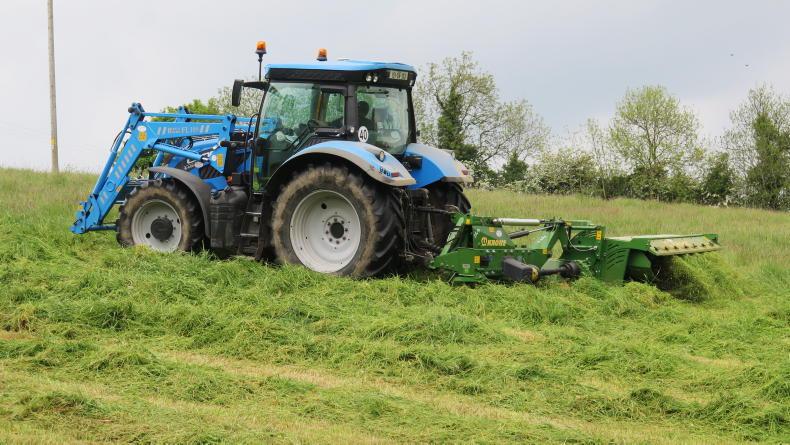
Never hand over money without physically seeing and driving the machine.
The source
With today’s prices of decent used tractors, we would be keen to see punters buy from a main dealer with a good reputation who will provide a warranty on paper. No main dealer worth their salt will want to sell a dud, but the same can’t be guaranteed for all ‘dealers’.
Often, main dealers will have initially sold and maintained the tractor since new, which offers piece of mind. In such scenarios, we would advise that you speak to the original owner where possible.
Buying a tractor or any machine privately is often initially a bit cheaper, but this isn’t always the case in the long run.
Remember, the riskiest scenario is buying a machine you don’t know, from a seller you don’t know, with no warranty. If something goes wrong, you have no comeback.
General condition and inspection
A first glance at a tractor’s general condition will tell a lot about how it has been looked after.
For those less mechanically minded, it may be worthwhile asking a friend or local mechanic to view the tractor.
Inspect the tractor closely for oil leaks under the cab and in and around the engine. Look for telltale signs that the tractor has been split or had extensive work carried out.
These would include signs that paint has been removed from bolt heads and non-original gasket sealers, etc, indicating the possibility that the tractor may have been split.
This isn’t uncommon for a high-hour machine, but it is worthwhile asking the question as to why it was done. Ideally, a dry original engine and back end is what you’re looking for.
Any machine should be started and let run for five minutes before test-driving. When an engine is cold, this is the most likely time to hear any potential knocks or rattles, so listen carefully. Upon returning from the test drive, check again for oil leaks or weeps.
Often, tractors presented for sale will have been thoroughly washed, removing traces of oil which will reappear after being operated.
Check the engine that there is no blowback. Blowback tends to indicate compression issues. Ideally, the engine should be smooth and burn clean, with little signs of smoke.
Keep an eye out for stamps on components stating the date of manufacture. Ideally, an original component’s date of manufacture should match the age of the machine.
For example, if a 2010 tractor has a 2015 stamped hydraulic pump, it immediately indicates that at some point during 2015 or after, the pump has been changed.
Check for play or wear in moving parts such as the front axle, rear pickup hitch and three-point linkage. Ensure spool valves are also working as intended and not sticking.
Factor in tyre wear into the buying price of the machine.
Ensure all controls and features are intact and fully functioning. The same goes for glass wear, lights and body panels. Ask the dealer if they know the tractor’s history and where it came from originally.
If they do, it might be worth the reassurance talking to the previous owner or whoever carried out the maintenance over their ownership.
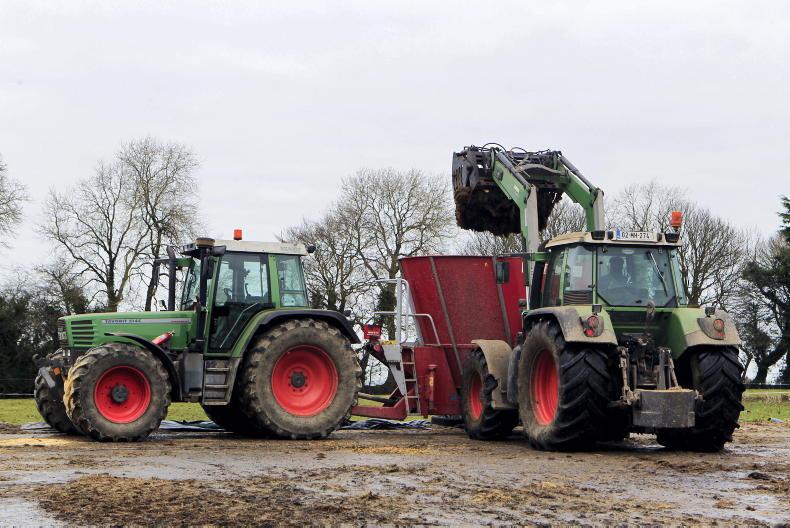
The status of finance on second-hand vehicles can be verified by contacting Hire Purchase Information Ltd.
Is it clocked?
According to figures from cartell.ie, investigation shows that 23% of vehicle imports in the first six months this year showed mileage discrepancies (almost one in every four). Remember, this isn’t unique to cars.
Unlike cars or other commercial vehicles, finding out a used tractor’s true history can be almost impossible.
Car and van mileage is recorded at NCT or DOE tests, something that obviously doesn’t happen for tractors.
The discrepancy of hours on machinery isn’t just happening among imported machines, but Irish equipment too.
One well-established Irish machinery dealer told us of one instance where a tractor was imported registering 6,000 hours on the clock.
A short time later, the tractor was in the garage for the correction of an issue. A diagnostic tool was plugged into the tractor’s ECU and displayed that the tractor had, in fact, over double the hours to what the odometer was reading.
Even with a rigorous inspection from an experienced person, it can be difficult to prove the genuine hours on a machine.
It might not have been the seller who actually clocked the machine, but a previous owner.
Down through the years, farmers have told us horror stories of used machines they purchased which seemed genuine, only to come across a next service due sticker or card in the cab or under the bonnet several months later with far more hours than they were led to believe upon purchasing.
Such scenarios drive home the message that it often pays to purchase machines from genuine dealers where you have a comeback.
Beware of scams
Buying used equipment online is convenient and while many online adverts are probably legit, all you have to do is Google ‘tractor scams’ to discover the many hundreds of examples of farmers who have been left thousands of euros out of pocket when trying to buy machinery online after falling foul of cybercriminals.
Machinery scams are big business and are increasingly happening nowadays. Many of these scams are very elaborate, involving conmen creating fake websites and often stealing business details from genuine dealers to appear convincing.
Such a scenario, as recently as last week, involved one Irish machinery dealer where a fraudulent website copied its details including its name, VAT number and company registration number to conduct false trading. Some helpful tips to avoid such scenarios include:
If the price seems too good to be true, then it probably is. Never hand over money without physically seeing and driving the machine. Look into the seller. Check that details such as the address and phone number are valid. Visit the seller to view the machine at their farm or premises in daylight. Be very suspicious of anyone initially offering to meet halfway or at any other location. Give the tractor a full inspection and test drive. Check the tractor’s documentation and identifiable features, such as serial numbers, and make sure they haven’t been tampered with. Don’t rush into anything. If you’re not happy, walk away until you have carried out sufficient background research. Always pay by bank draft or cheque, never with cash. Outstanding finance
When buying privately, it is important to verify that the person selling the machine is the actual owner and that there are no borrowings secured on the vehicle at the time of sale.
The status of finance on secondhand vehicles can be verified by contacting Hire Purchase Information Ltd.
Websites such as cartell.ie and motorcheck.ie also allow you to check the registration of a vehicle.
In short
Buy from a reputable main dealer where possible. If the price seems too good to be true, then it probably is. Never hand over money without physically seeing and driving the machine. Even with a rigorous inspection, it can be difficult to prove the genuine hours on a machine. The status of finance on used vehicles can be verified by contacting Hire Purchase Information Ltd.
The high prices of new tractors are turning more and more farmers and contractors to the secondhand market.
It is estimated that in the region of 10,000 used tractors are for sale throughout Ireland at any one time across a wide range of private sellers and dealers.
The selection on offer tends to be across a wide range of variously specified models in a multitude of conditions, not all of which spent their lives working in fields in Ireland.
At over 3,250 units, FTMTA figures show that this year to date is the highest on record for tractor imports, offering more alternatives to new machines.
Even the most seasoned buyer can get caught out when picking up a used machine.
In this piece, we provide a few pointers to help guide farmers in the process and remind some of the more experienced buyers of the little things that can be overlooked when considering a potential purchase.

Never hand over money without physically seeing and driving the machine.
The source
With today’s prices of decent used tractors, we would be keen to see punters buy from a main dealer with a good reputation who will provide a warranty on paper. No main dealer worth their salt will want to sell a dud, but the same can’t be guaranteed for all ‘dealers’.
Often, main dealers will have initially sold and maintained the tractor since new, which offers piece of mind. In such scenarios, we would advise that you speak to the original owner where possible.
Buying a tractor or any machine privately is often initially a bit cheaper, but this isn’t always the case in the long run.
Remember, the riskiest scenario is buying a machine you don’t know, from a seller you don’t know, with no warranty. If something goes wrong, you have no comeback.
General condition and inspection
A first glance at a tractor’s general condition will tell a lot about how it has been looked after.
For those less mechanically minded, it may be worthwhile asking a friend or local mechanic to view the tractor.
Inspect the tractor closely for oil leaks under the cab and in and around the engine. Look for telltale signs that the tractor has been split or had extensive work carried out.
These would include signs that paint has been removed from bolt heads and non-original gasket sealers, etc, indicating the possibility that the tractor may have been split.
This isn’t uncommon for a high-hour machine, but it is worthwhile asking the question as to why it was done. Ideally, a dry original engine and back end is what you’re looking for.
Any machine should be started and let run for five minutes before test-driving. When an engine is cold, this is the most likely time to hear any potential knocks or rattles, so listen carefully. Upon returning from the test drive, check again for oil leaks or weeps.
Often, tractors presented for sale will have been thoroughly washed, removing traces of oil which will reappear after being operated.
Check the engine that there is no blowback. Blowback tends to indicate compression issues. Ideally, the engine should be smooth and burn clean, with little signs of smoke.
Keep an eye out for stamps on components stating the date of manufacture. Ideally, an original component’s date of manufacture should match the age of the machine.
For example, if a 2010 tractor has a 2015 stamped hydraulic pump, it immediately indicates that at some point during 2015 or after, the pump has been changed.
Check for play or wear in moving parts such as the front axle, rear pickup hitch and three-point linkage. Ensure spool valves are also working as intended and not sticking.
Factor in tyre wear into the buying price of the machine.
Ensure all controls and features are intact and fully functioning. The same goes for glass wear, lights and body panels. Ask the dealer if they know the tractor’s history and where it came from originally.
If they do, it might be worth the reassurance talking to the previous owner or whoever carried out the maintenance over their ownership.

The status of finance on second-hand vehicles can be verified by contacting Hire Purchase Information Ltd.
Is it clocked?
According to figures from cartell.ie, investigation shows that 23% of vehicle imports in the first six months this year showed mileage discrepancies (almost one in every four). Remember, this isn’t unique to cars.
Unlike cars or other commercial vehicles, finding out a used tractor’s true history can be almost impossible.
Car and van mileage is recorded at NCT or DOE tests, something that obviously doesn’t happen for tractors.
The discrepancy of hours on machinery isn’t just happening among imported machines, but Irish equipment too.
One well-established Irish machinery dealer told us of one instance where a tractor was imported registering 6,000 hours on the clock.
A short time later, the tractor was in the garage for the correction of an issue. A diagnostic tool was plugged into the tractor’s ECU and displayed that the tractor had, in fact, over double the hours to what the odometer was reading.
Even with a rigorous inspection from an experienced person, it can be difficult to prove the genuine hours on a machine.
It might not have been the seller who actually clocked the machine, but a previous owner.
Down through the years, farmers have told us horror stories of used machines they purchased which seemed genuine, only to come across a next service due sticker or card in the cab or under the bonnet several months later with far more hours than they were led to believe upon purchasing.
Such scenarios drive home the message that it often pays to purchase machines from genuine dealers where you have a comeback.
Beware of scams
Buying used equipment online is convenient and while many online adverts are probably legit, all you have to do is Google ‘tractor scams’ to discover the many hundreds of examples of farmers who have been left thousands of euros out of pocket when trying to buy machinery online after falling foul of cybercriminals.
Machinery scams are big business and are increasingly happening nowadays. Many of these scams are very elaborate, involving conmen creating fake websites and often stealing business details from genuine dealers to appear convincing.
Such a scenario, as recently as last week, involved one Irish machinery dealer where a fraudulent website copied its details including its name, VAT number and company registration number to conduct false trading. Some helpful tips to avoid such scenarios include:
If the price seems too good to be true, then it probably is. Never hand over money without physically seeing and driving the machine. Look into the seller. Check that details such as the address and phone number are valid. Visit the seller to view the machine at their farm or premises in daylight. Be very suspicious of anyone initially offering to meet halfway or at any other location. Give the tractor a full inspection and test drive. Check the tractor’s documentation and identifiable features, such as serial numbers, and make sure they haven’t been tampered with. Don’t rush into anything. If you’re not happy, walk away until you have carried out sufficient background research. Always pay by bank draft or cheque, never with cash. Outstanding finance
When buying privately, it is important to verify that the person selling the machine is the actual owner and that there are no borrowings secured on the vehicle at the time of sale.
The status of finance on secondhand vehicles can be verified by contacting Hire Purchase Information Ltd.
Websites such as cartell.ie and motorcheck.ie also allow you to check the registration of a vehicle.
In short
Buy from a reputable main dealer where possible. If the price seems too good to be true, then it probably is. Never hand over money without physically seeing and driving the machine. Even with a rigorous inspection, it can be difficult to prove the genuine hours on a machine. The status of finance on used vehicles can be verified by contacting Hire Purchase Information Ltd.



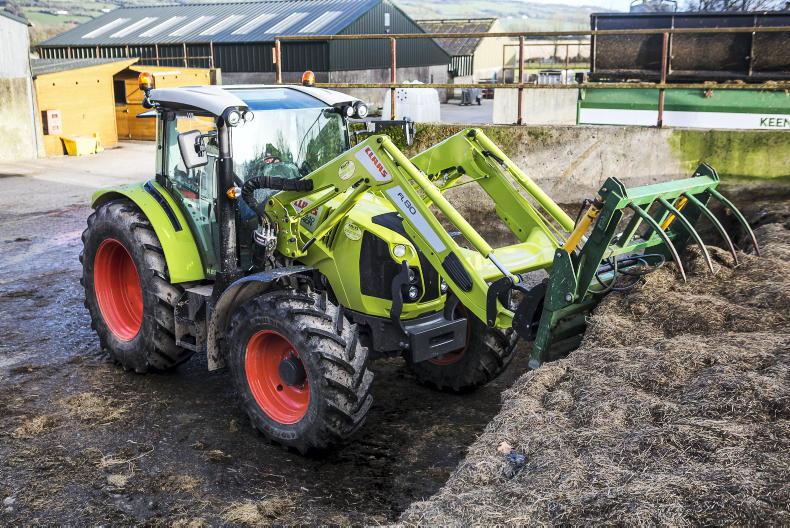




 This is a subscriber-only article
This is a subscriber-only article







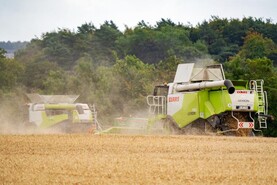

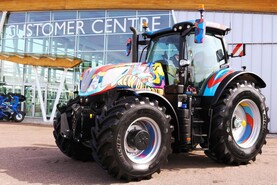
SHARING OPTIONS: